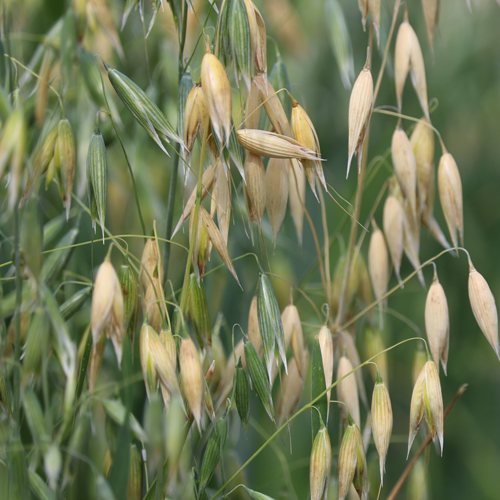(800) 352-5247
- Seed Finder
- About
- Resources
- Find a Dealer
- Blue River Organic
- Viking Non-GMO
- Login

$29.25 / 48lb bag (1.5 bushel)
Oats are a vital part of our seed offerings, and we carry a wide selection of organic and conventional non-GMO spring oat seed varieties to meet any production need. Whether you aim to produce milling-quality oats, maximize bushels for animal feed, provide a nurse crop for alfalfa or forages, plant an economical cover crop, use spring oats for hay, produce straw, or meet a niche, food-grade market, we have the best adapted public spring oats for sale to meet your farm goals.
Oats are an annual cereal grain that can be used as a nurse crop to establish alfalfa, chopped for livestock feed, or raised for grain. Spring oats are planted very early in the spring, are tolerant to cold, fast establishing, and mature in the middle of the summer. We are a dedicated supporter of oat breeding at the University level and carry a diverse selection of oat varieties to suit any purpose.
Planting: Oats should be drilled 1-2 in. deep into a firm seedbed in early spring.
Planting Rate (straight for grain/forage): 80-110 lbs. (3 bu/A).
Planting Rate (with alfalfa): 40-50 lbs (1½ – 2 bu/A).
DOWNLOAD A GUIDE TO RAISING OATS [PDF]
Growing Quality Oats [BLOG]
Seeding Rates for Small Grains 2023
Planting Guidelines for Small Grains
Have you used this product? Let us know what you think.